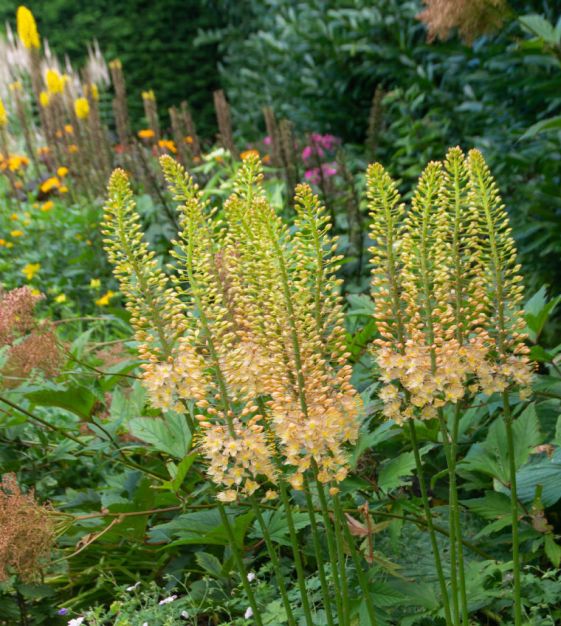-
- 20%-Off Website Specials
- New for 2024!
- Tulips
- Narcissi
- Allium
- Anemone blanda
- Brodiaea
- Camassia
- Chionodoxa
- Corydalis
- Crocus
- Eranthis
- Eremurus
- Erythronium
- Fritillaria
- Galanthus
- Geranium
- Gladiolus
- Hyacinths
- Hyacinthoides
- Ipheion uniflorum
- Dutch Iris
- Rock Garden Iris
- Ixiolirion
- Leucojum Aestivum
- Muscari
- Ornithogalum
- Oxalis
- Puschkinia
- Scilla
- Lilies
- Peonies
- Tender Bulbs
- Anemone Giants
- Tecolote Ranunculus
- Freesias
- Paperwhites
- Amaryllis
Eremurus isabellinus Romance
It has spires of salmon-pink florets and yellow-orange stamens.
Imagine this spidery rootstock as your hand with the fingers outstretched. The top of the back of your hand is the nose of the Eremurus and your fingers are its spidery tentacles. Plant immediately in rich, well-draining soil in a dry spot. Plant with the "nose" up and the fingers out: do not break off any of the tentacles and only cover the top of the rootstock with 2" to 3" of soil. In areas with cold winters and inconsistent snow cover, a 2" layer of mulch should be applied after the top of the ground freezes to protect the shallow rootstocks from temperature spikes.
Top size tuberous rootstocks. May/June. HZ: 5-8. 3' to 6'.
Eremurus are The Art & Soul of Spring.
Eremurus Horticultural Tips
Imagine this spidery rootstock as your hand with the fingers outstretched. The top of the back of your hand is the nose of the Eremurus and your fingers are its spidery tentacles. Plant immediately in rich, well-draining soil in a dry spot. Plant with the "nose" up and the fingers out: do not break off any of the tentacles and only cover the top of the rootstock with 2" to 3" of soil. In areas with cold winters and inconsistent snow cover, a 2" layer of mulch should be applied after the top of the ground freezes to protect the shallow rootstocks from temperature spikes.
Top size tuberous rootstocks. May/June. HZ: 5-8. 3' to 6'.
Eremurus are The Art & Soul of Spring.
Eremurus Horticultural Tips





